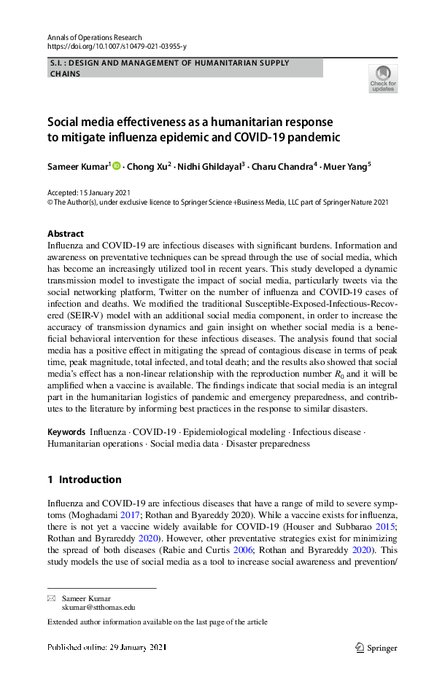
Influenza and COVID-19 are infectious diseases with significant burdens. Information and awareness on preventative techniques can be spread through the use of social media, which has become an increasingly utilized tool in recent years. This study developed a dynamic transmission model to investigate the impact of social media, particularly tweets via the social networking platform, Twitter on the number of influenza and COVID-19 cases of infection and deaths. We modified the traditional Susceptible-Exposed-Infectious-Recovered (SEIR-V) model with an additional social media component, in order to increase the accuracy of transmission dynamics and gain insight on whether social media is a beneficial behavioral intervention for these infectious diseases. The analysis found that social media has a positive effect in mitigating the spread of contagious disease in terms of peak time, peak magnitude, total infected, and total death; and the results also showed that social media’s effect has a non-linear relationship with the reproduction number and it will be amplified when a vaccine is available. The findings indicate that social media is an integral part in the humanitarian logistics of pandemic and emergency preparedness, and contributes to the literature by informing best practices in the response to similar disasters.